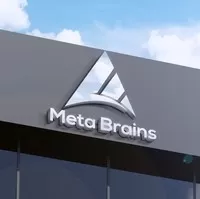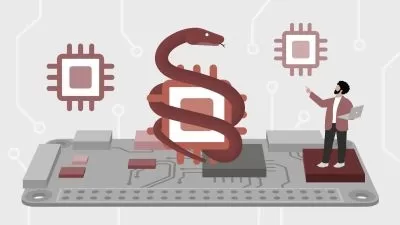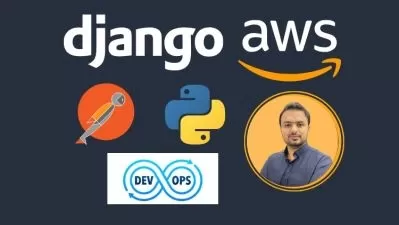Python for Data Science & Machine Learning: Zero to Hero
Meta Brains
6:00:01
Description
Master Data Science & Machine Learning in Python: Numpy, Pandas, Matplotlib, Scikit-Learn, Machine Learning, and more!
What You'll Learn?
- Gain familiarity with Pandas, a data analysis tool
- Get a grasp on the theory behind basic and multiple linear regression
- Tackle regression problems easily
- Discover the logic behind decision trees
- Acquaint yourself with the various clustering algorithms
Who is this for?
What You Need to Know?
More details
DescriptionThis machine learning course will provide you the fundamentals of how companies like Google, Amazon, and even Udemy utilize machine learning and artificial intelligence (AI) to glean meaning and insights from massive data sets. Glassdoor and Indeed both report that the average salary for a data scientist is $120,000. This is the standard, not the exception.
Data scientists are already quite desirable. It's difficult to keep them on staff in today's tight labor market. There is a severe shortage of people who possess the rare combination of scientific training, computer expertise, and analytical talents.
Today's data scientists are held to the same standards as the Wall Street "quants" of the '80s and '90s. When the need arose for innovative algorithms and data approaches, physicists and mathematicians flocked to investment banks and hedge funds.
So, it's no surprise that data science is rising to prominence as a promising career path in the modern day. It is analytic in focus, driven by code, and performed on a computer. As a result, it shouldn't be a shock that the demand for data scientists has been growing steadily in the workplace for the past few years.
On the other hand, availability has been low. Obtaining the education and experience necessary to be hired as a data scientist is tough. And that's why we made this course in the first place!
Each topic is described in plain English, and the course does its best to avoid mathematical notations and jargon. Once you have access to the source code, you can experiment with it and improve upon it. Learning and applying these algorithms in the real world, rather than in a theoretical or academic setting, is the focus of this course.
Each video will leave you with a new perspective that you can implement right away!
If you have no background in statistics, don't let that stop you from enrolling in this course; we welcome students of all levels.
Who this course is for:
- Aspiring Machine Learning Professionals
- Anyone interested in expanding their skill set with machine learning and Python
- Inquisitive technologists interested in seeing Machine Learning in action
- Those who are already proficient in programming and want to expand their capabilities by learning about machine learning
This machine learning course will provide you the fundamentals of how companies like Google, Amazon, and even Udemy utilize machine learning and artificial intelligence (AI) to glean meaning and insights from massive data sets. Glassdoor and Indeed both report that the average salary for a data scientist is $120,000. This is the standard, not the exception.
Data scientists are already quite desirable. It's difficult to keep them on staff in today's tight labor market. There is a severe shortage of people who possess the rare combination of scientific training, computer expertise, and analytical talents.
Today's data scientists are held to the same standards as the Wall Street "quants" of the '80s and '90s. When the need arose for innovative algorithms and data approaches, physicists and mathematicians flocked to investment banks and hedge funds.
So, it's no surprise that data science is rising to prominence as a promising career path in the modern day. It is analytic in focus, driven by code, and performed on a computer. As a result, it shouldn't be a shock that the demand for data scientists has been growing steadily in the workplace for the past few years.
On the other hand, availability has been low. Obtaining the education and experience necessary to be hired as a data scientist is tough. And that's why we made this course in the first place!
Each topic is described in plain English, and the course does its best to avoid mathematical notations and jargon. Once you have access to the source code, you can experiment with it and improve upon it. Learning and applying these algorithms in the real world, rather than in a theoretical or academic setting, is the focus of this course.
Each video will leave you with a new perspective that you can implement right away!
If you have no background in statistics, don't let that stop you from enrolling in this course; we welcome students of all levels.
Who this course is for:
- Aspiring Machine Learning Professionals
- Anyone interested in expanding their skill set with machine learning and Python
- Inquisitive technologists interested in seeing Machine Learning in action
- Those who are already proficient in programming and want to expand their capabilities by learning about machine learning
User Reviews
Rating
Meta Brains
Instructor's Courses
Udemy
View courses Udemy- language english
- Training sessions 185
- duration 6:00:01
- Release Date 2022/12/01



















